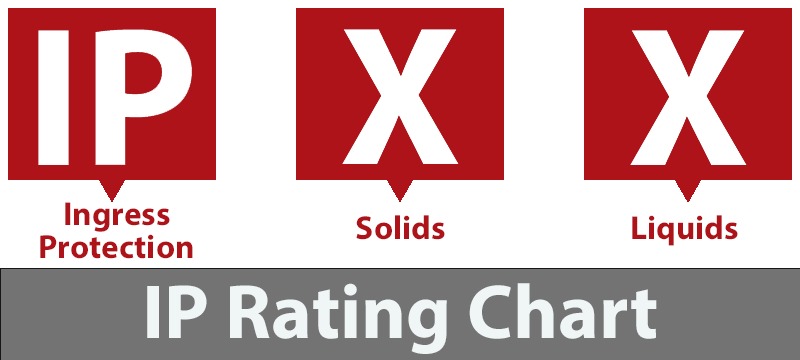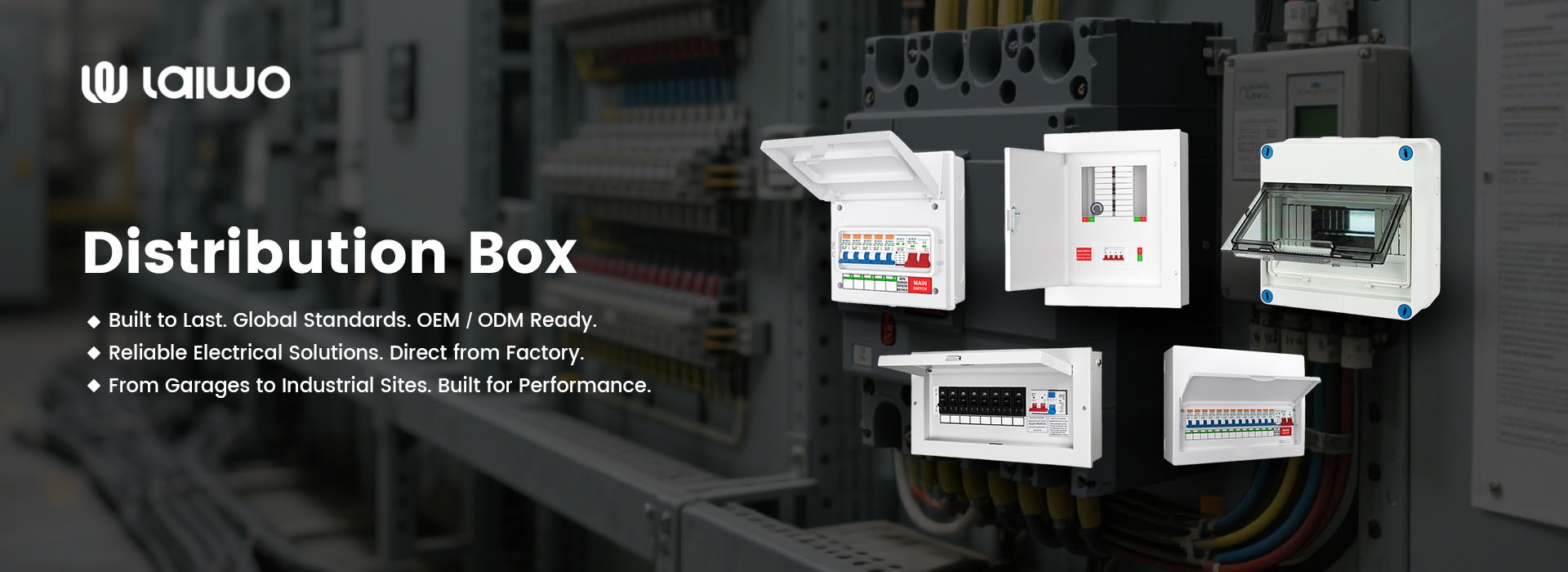Next: What is the difference between the 17th and 18th edition consumer unit?

Deciphering the IP Rating Nomenclature
IP40 Consumer Units: The Indoor Standard
IP65 Consumer Units: The Robust Solution
The Weatherproofing Imperative
Outdoor Installation Considerations
The IP Rated Fuse Board Evolution
Procurement Strategies for Industrial Applications
Future-Proofing Considerations
Maintenance and Operational Implications
FAQs About IP Ratings For Consumer Units
Conclusion: Making the Optimal Choice
Laiwo Electrical: OEM/ODM Specialist for Compliant Consumer Units & Distribution Boards
When it comes to electrical safety and equipment longevity, understanding ingress protection becomes paramount. The debate between IP40 and IP65 ratings for consumer units isn't merely technical jargon—it's a critical decision that impacts operational continuity, safety protocols, and long-term investment returns in industrial and commercial environments.

The International Protection Marking, universally recognized as IP rating, functions as a standardized taxonomy for quantifying enclosure efficacy against intrusive elements. This dual-digit classification system provides unambiguous specifications for both particulate and moisture ingress protection levels.
The first digit delineates solid object protection on a scale from 0 to 6, while the second digit quantifies liquid ingress protection from 0 to 9. An IP rated consumer unit bearing these markings undergoes rigorous testing protocols to validate its protective capabilities under standardized conditions.
| First Digit | rotection Level (Description) | Second Digit | Protection Level (Description) |
| 0 (or X) | Not rated / No protection | 0 (or X) | Not rated / No protection |
| 1 | Protected against solid objects ≥50mm (e.g., accidental hand contact) | 1 | Protection against vertically falling droplets (e.g., condensation) |
| 2 | Protected against solid objects ≥12.5mm (e.g., accidental finger contact) | 2 | Protection against vertically dripping water (enclosure tilted up to 15°) |
| 3 | Protected against solid objects ≥2.5mm (e.g., tools and wires) | 3 | Protection against water spray (up to 60° off vertical) |
| 4 | Protected against solid objects ≥1mm (e.g., tools, wires, small objects) | 4 | Protection against splashing water (from any direction) |
| 5 | Dust protected (limited ingress permitted without harmful effects) | 5 | Protection against low-pressure water jets (from any angle) |
| 6 | Dust-tight (no ingress of dust) | 6 | Protection against powerful water jets (from any direction) |
| 7 | Watertight against temporary immersion (up to 1m for 30 min) | ||
| 8 | Watertight against continuous immersion (under pressure, beyond 1m) | ||
| 9 (or 9K) | Protection against high-pressure, high-temperature jets (e.g., washdowns) |
B2B Insight: The IP rating for consumer unit selection directly correlates with installation environment characteristics, operational parameters, and regulatory compliance requirements. This decision significantly influences maintenance schedules, replacement cycles, and overall system reliability.
Learn More:
Why IP Ratings Matter for Consumer Units?
2 Way to 36 Way Distribution Boards - What’s the Difference?
What is the difference between the 17th and 18th edition consumer unit?
IP40-rated enclosures provide fundamental protection against solid objects exceeding 1mm in diameter while offering no inherent moisture protection. These units excel in controlled environments where dust infiltration represents the primary concern, and moisture exposure remains negligible.
Climate-controlled manufacturing facilities with minimal particulate generation
Office complexes and commercial buildings with HVAC filtration systems
Indoor distribution centers with regulated environmental conditions
Educational institutions and healthcare facilities maintaining sterile environments
The economic advantage of IP40 units lies in their cost-effectiveness and simplified maintenance protocols. However, their vulnerability to moisture ingress necessitates careful environmental assessment during the specification process.
An IP65 consumer unit represents the gold standard for challenging environments, providing comprehensive dust-tight protection coupled with resistance against water jets from any direction. This rating signifies complete particulate exclusion and substantial moisture protection, making it indispensable for demanding applications.
The consumer unit IP65 specification ensures operational integrity in environments where traditional units would fail catastrophically. These enclosures incorporate advanced sealing technologies, robust gasket systems, and sophisticated drainage mechanisms to maintain internal environment stability.
Food processing facilities with frequent washdown procedures
Chemical processing plants with aggressive atmospheric conditions
Marine installations exposed to salt spray and moisture
Outdoor installations requiring weather-resistant protection
Mining operations with excessive dust and moisture exposure
Learn More: IP65 Garage Consumer Units/EV Consumer Units
A weatherproof consumer unit transcends basic IP ratings, incorporating design elements that address thermal cycling, UV degradation, and corrosive atmosphere exposure. These units often exceed standard IP65 specifications through enhanced material selection and construction methodologies.
The evolution toward waterproof consumer unit designs reflects industry recognition of climate change impacts and extreme weather frequency increases. Modern installations increasingly specify these robust solutions as insurance against operational disruption and equipment replacement costs.
| Rating | Dust Protection | Water Protection | Typical Application |
|---|---|---|---|
| IP40 | Protected against solid objects >1mm | No protection | Indoor controlled environments |
| IP65 | Dust-tight | Protected against water jets | Harsh industrial/outdoor environments |
An outdoor fuse box installation demands meticulous attention to environmental exposure patterns. Temperature fluctuations, precipitation frequency, wind-driven debris, and solar irradiation collectively challenge enclosure integrity over operational lifespans.
The outdoor consumer unit specification process requires comprehensive site assessment, including microclimate analysis, pollution exposure evaluation, and accessibility requirements for maintenance personnel. These factors significantly influence both initial specification and ongoing operational costs.
Thermal Cycling: Repeated expansion and contraction stresses sealing systems and connection integrity
UV Degradation: Prolonged solar exposure compromises polymer-based components and surface treatments
Corrosive Atmospheres: Industrial pollutants, salt spray, and chemical vapors accelerate material degradation
Mechanical Stress: Wind loading, ice formation, and debris impact challenge structural integrity
Traditional fuse board designs have evolved substantially to accommodate modern protection requirements. Today's IP rated fuse board incorporates advanced materials, improved sealing technologies, and enhanced accessibility features while maintaining compliance with evolving safety standards.
The transition from conventional designs to IP-rated solutions reflects industry maturation and regulatory evolution. Modern installations increasingly mandate these protective measures as baseline requirements rather than premium options.
Effective Distribution Board Procurement requires comprehensive understanding of application requirements, environmental conditions, and long-term operational objectives. Successful procurement strategies balance initial capital expenditure against lifecycle costs, including maintenance, replacement, and downtime expenses.
Consumer Unit Wholesale opportunities often provide substantial cost advantages for large-scale installations, but require careful specification standardization and quality assurance protocols. Working with established MCB Distribution Box Supplier networks ensures consistent product quality and technical support availability.
Electrical Panel Board Procurement timelines must account for manufacturing lead times and delivery logistics
Industrial Distribution Equipment Purchasing decisions should incorporate future expansion requirements
Commercial Consumer Unit Dealers provide valuable application expertise and technical support
Electrical Distribution Panel Suppliers offer varying warranty terms and service capabilities
Procurement Best Practice: Engage multiple Power Distribution Box Wholesale suppliers during specification development to optimize both technical requirements and commercial terms. This approach ensures competitive pricing while maintaining quality standards.
The Distribution Board RFQ process demands precise technical specifications to ensure supplier responses address actual requirements rather than generic offerings. Successful Consumer Unit Tender documents balance technical requirements with commercial flexibility, enabling innovative solutions while maintaining compliance standards.
An effective MCB Panel Quotation Request includes detailed environmental specifications, installation requirements, and performance criteria. This comprehensive approach facilitates accurate supplier responses and meaningful comparison analysis.
Detailed environmental exposure specifications
Electrical load requirements and future expansion provisions
Installation timeline and logistical constraints
Maintenance accessibility requirements
Warranty terms and technical support expectations
The Electrical Distribution Equipment Bid evaluation process should incorporate total cost of ownership calculations, not merely initial purchase prices. Consider maintenance requirements, expected service life, and replacement part availability when comparing alternatives.
Choosing between IP40 and IP65 consumer units requires systematic evaluation of multiple factors. Environmental conditions represent the primary determinant, but operational requirements, maintenance capabilities, and budget constraints significantly influence optimal selection.
The Power Panel Procurement RFP development process should incorporate stakeholder input from operations, maintenance, and safety personnel to ensure comprehensive requirement capture. This collaborative approach prevents specification gaps that could compromise system performance or safety.
| Factor | IP40 Suitability | IP65 Requirement |
|---|---|---|
| Indoor Installation | High | Moderate |
| Outdoor Exposure | Low | High |
| Washdown Areas | Unsuitable | Essential |
| Dusty Environment | Limited | High |
| Cost Sensitivity | High | Moderate |
The Industrial Electrical Equipment Tender process increasingly emphasizes adaptability and future-proofing capabilities. Climate change impacts, evolving safety standards, and technological advancement necessitate forward-looking specification approaches.
Modern consumer unit IP rating requirements reflect these evolving demands, with many organizations adopting IP65 as standard specification regardless of current environmental conditions. This approach provides operational flexibility and future adaptability while potentially reducing long-term costs through standardization benefits.
The maintenance paradigm differs significantly between IP40 and IP65 units. While IP40 units require regular cleaning and environmental monitoring, IP65 units demand periodic seal inspection and gasket replacement to maintain protective integrity.
Operational procedures must account for these differences, with IP65 units requiring specialized techniques for enclosure access and cable entry sealing. Training requirements and tool specifications vary accordingly, influencing both initial implementation and ongoing operational costs.
Q1: Can IP65 Consumer units be left outside?
A1: IP ratings between 44 and 65 may be used for indoor and general outdoor use. Anything lower than IP44 should only be used indoors
Q2: Is IP65 Consumer Units enough for rain?
A2: Yes, an IP65 rating is generally considered sufficient for protection against heavy rain.
The IP40 versus IP65 decision ultimately hinges on application-specific requirements, environmental conditions, and operational priorities. While IP40 units provide cost-effective solutions for controlled environments, IP65 units offer superior protection for challenging conditions at premium pricing.
Successful specification requires comprehensive environmental assessment, stakeholder consultation, and long-term perspective consideration. The investment in appropriate protection levels pays dividends through reduced maintenance, extended equipment life, and enhanced operational reliability.
As environmental challenges intensify and operational demands increase, the trend toward higher IP ratings continues accelerating. Organizations investing in IP65 protection today position themselves advantageously for future operational requirements while ensuring current installation resilience.
Remember: the most expensive consumer unit is the one that fails when you need it most. Choose wisely, specify comprehensively, and invest in protection that matches your operational imperatives.

If you have any questions or require expert assistance with your electrical needs, our dedicated customer service team is ready to help. Give us a call or send us an email today and our dedicated team will provide you with the answers and support you need.
INQUIRY NOW